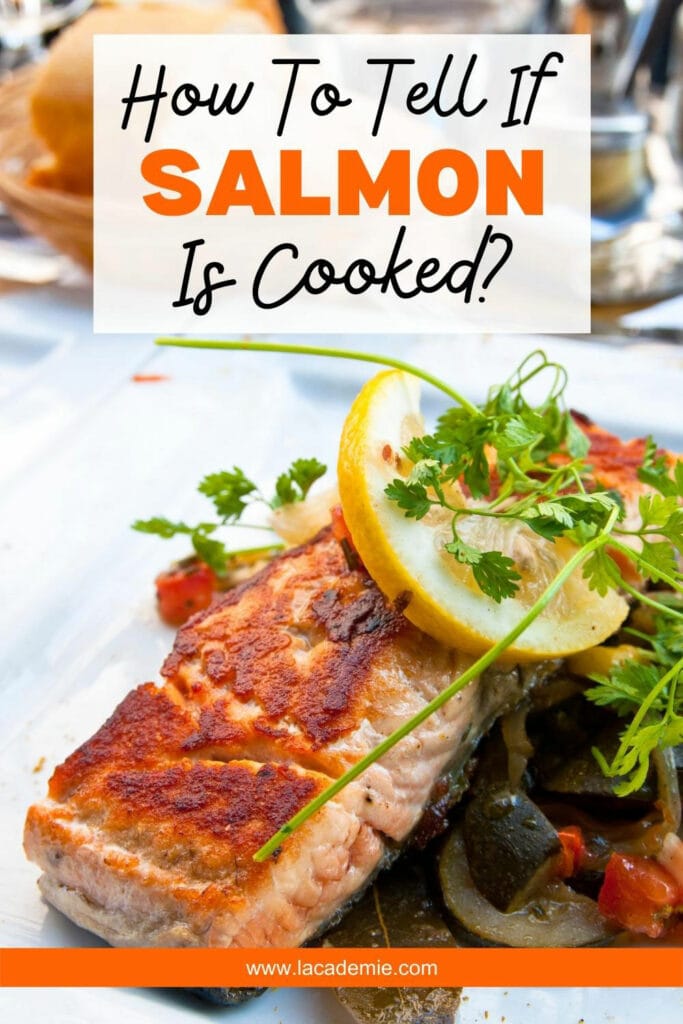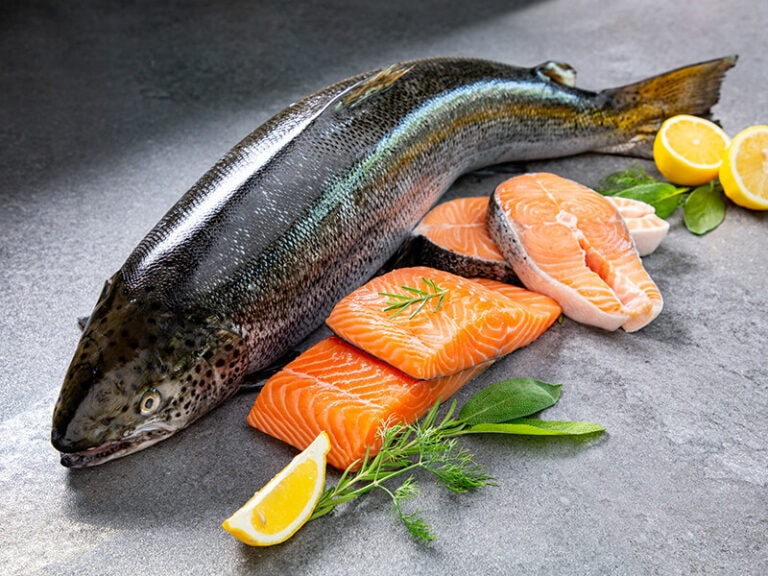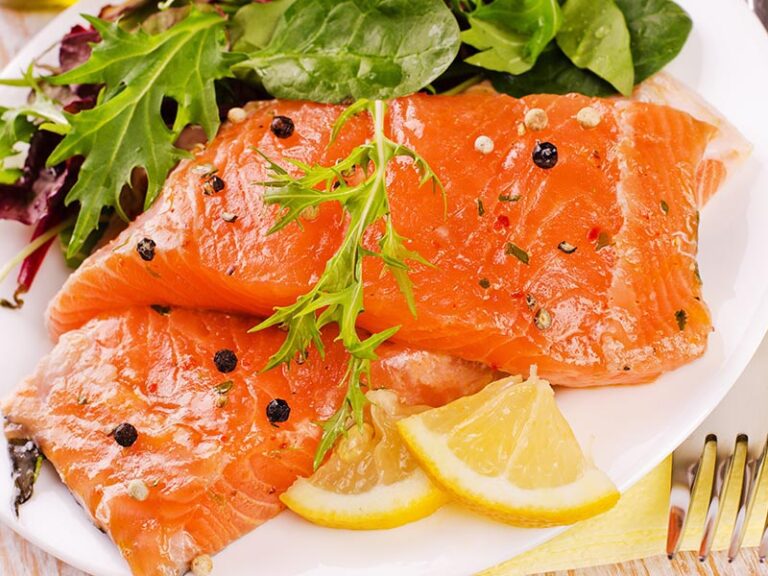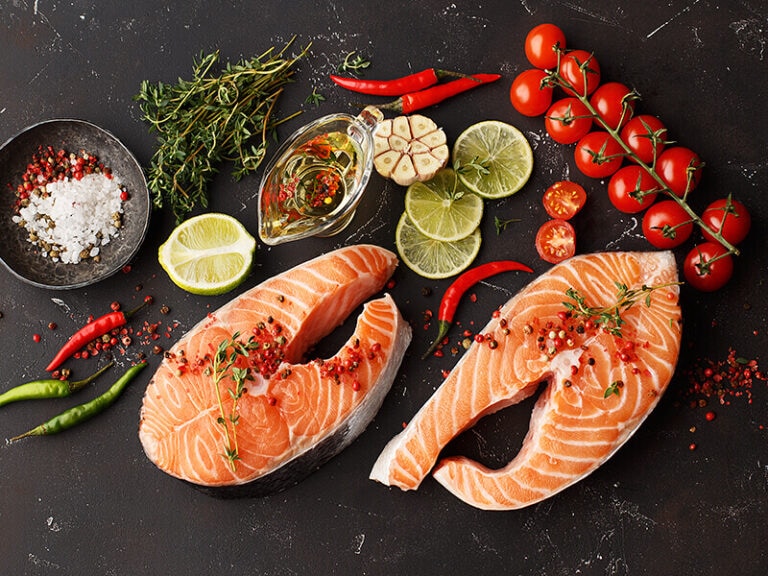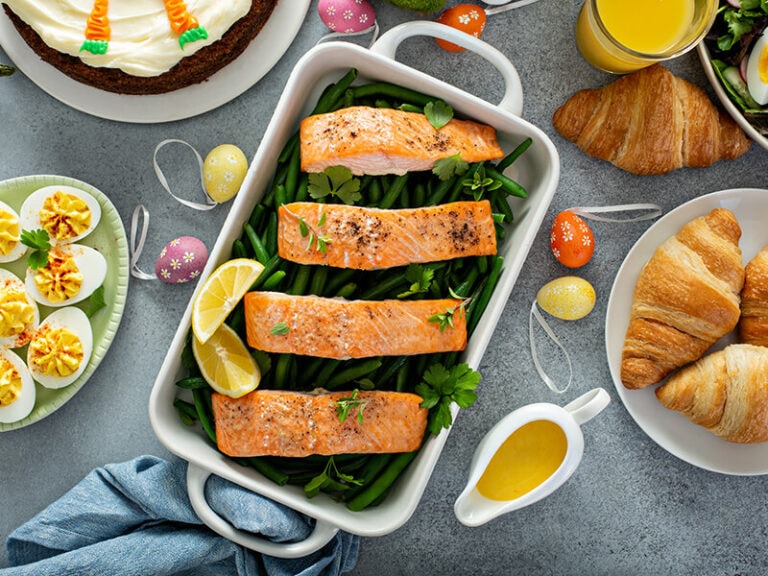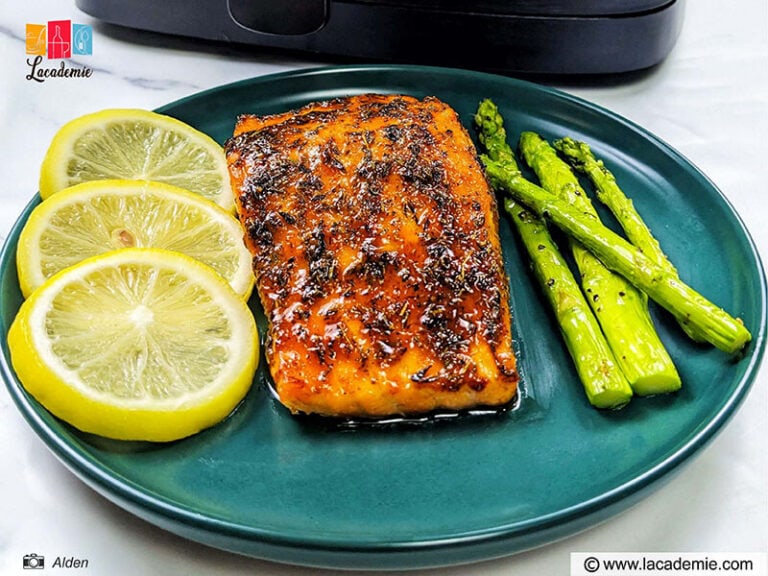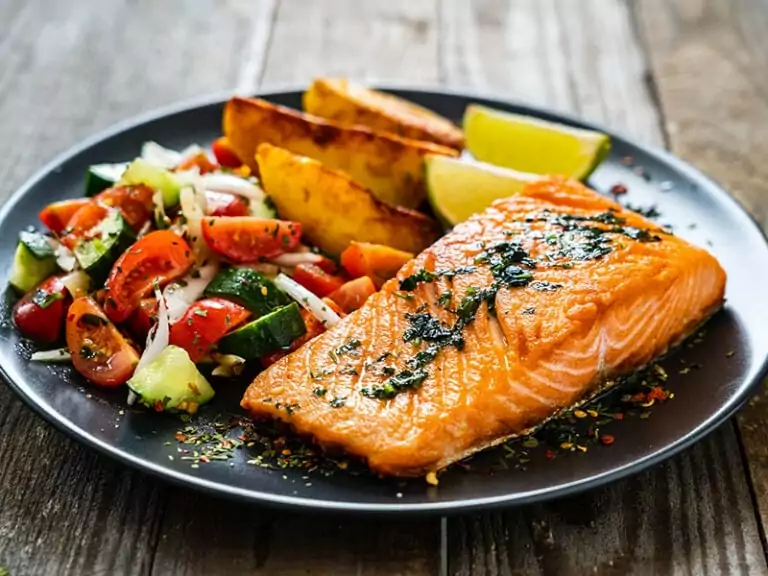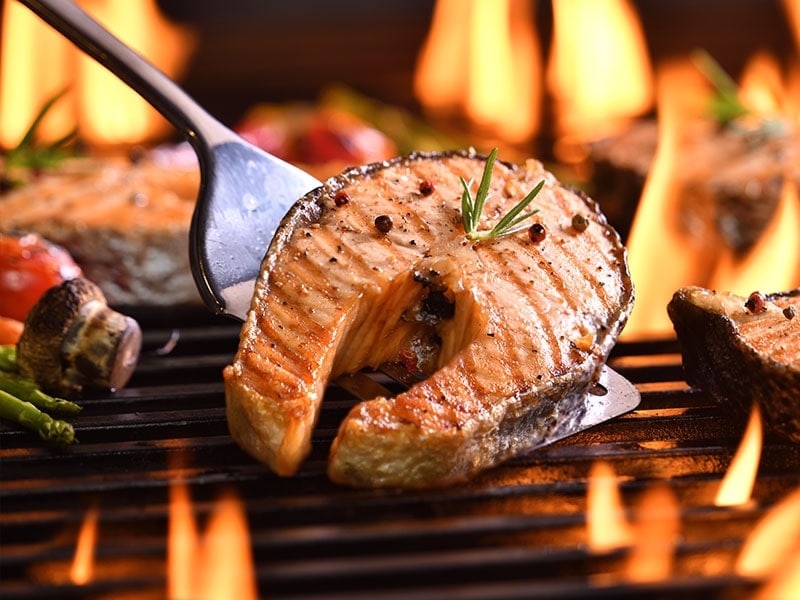
Knowing how to tell if salmon is cooked is a common problem amongst those who have dealt with this delectable fish. Finding the right moment to take salmon out of the heat is tricky because it’s a small time frame, and if you don’t know the signs, you can easily miss it.
Salmon is a delicate food that requires effort and attention. When undercooked, not only is it unappetizing, it can also be dangerous to the consumer. Yet overcooking your salmon makes it chalky and hard to eat. Only by timing the process correctly can you fully enjoy this tasty fish.
What’s more, being able to gauge salmon’s doneness will help a lot in determining the maximum time cooked salmon last in fridges correctly. If salmon is either undercooked or overcooked, there’s a high chance that it’ll spoil at a much faster pace.
Know When Your Salmon Is Done Right Away With Just A Few Simple Tricks
There are three easy ways to tell if your salmon is ready or not.
- Use A Thermometer: The most accurate method because it helps you tell exactly how well the salmon is cooked.
- Check For Texture And Color: You can use a butter knife to look at the outside and inside of the fish to examine its doneness.
- Use A Cake Tester Or A Butter Knife: Press either of these things to the fish, then place on your bottom lips and check for the level of warmth.
What Is Salmon?
Salmon is a type of saltwater fish native to the North Atlantic and the Pacific Ocean. In culinary, its flesh is recognized by the signature bright orange color, although some types can be white (1).
Due to their somewhat similar appearance, salmon and trout are often mistaken for one another. However, there are several dissimilarities between salmon and trouts, including habitat, nutrition values, flavors, and textures. So, you can’t use salmon and trout interchangeably.
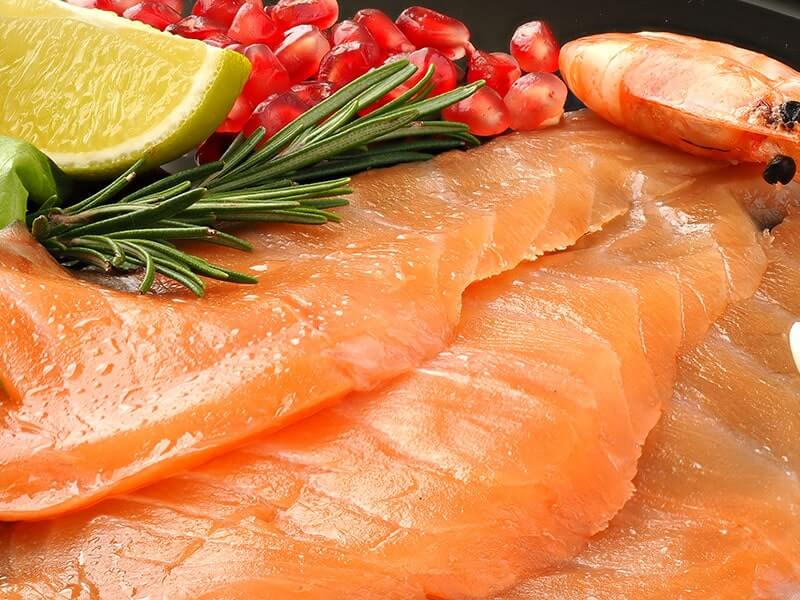
Salmon’s flavor is so particular and unique that you can’t mistake it for any other type of fish. It has a subtle and mild meat flavor with a very rich texture. Salmon can be cooked in various ways, like grilling, roasting, smoking, etc.
It is due to salmon’s unique flavor that you might have some difficulties deciding options to serve with salmon. However, I find that salmon goes exceptionally well with fresh salad, so you can take this into consideration the next time you decide to cook salmon for dinner.
The Most Popular Salmon Cooking Methods
Salmon can be cooked in many different ways, and if done right, it just might be one of the best things you have ever tasted. The following methods are some of the most common ones you might find in restaurants or can try out for yourself.
Grilling
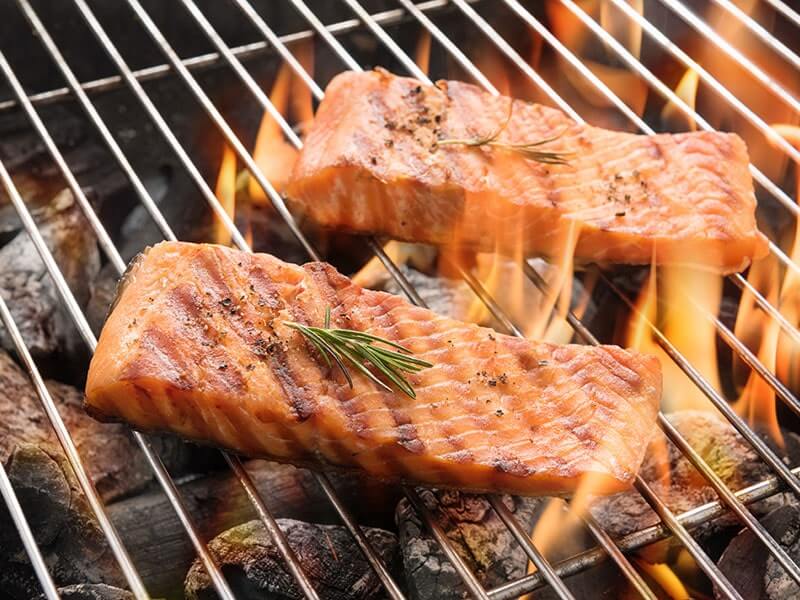
One of the easiest ways to cook salmon is by grilling it. The process usually only takes around ten minutes, and the result is absolutely glorious. Grilled salmon carries that highly addicting earthy and smoky flavor that can satisfy all your cravings.
Poaching
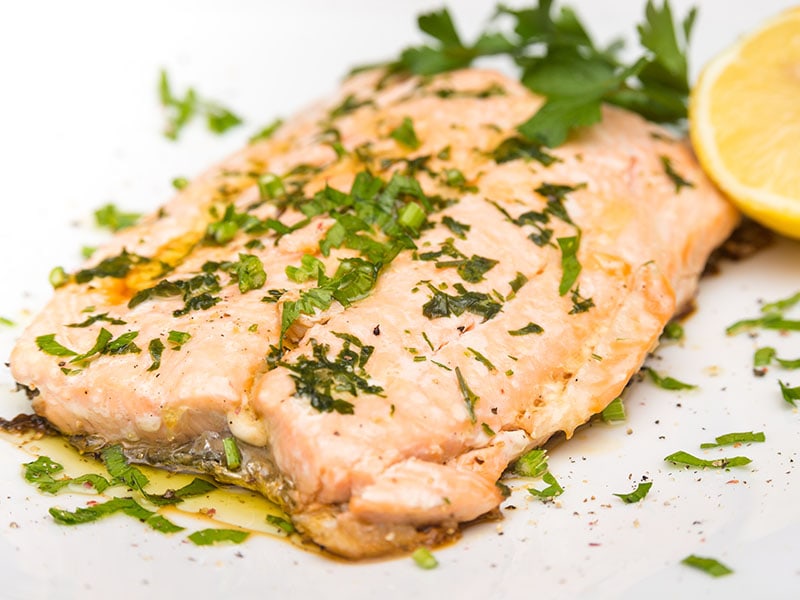
Poaching salmon includes gradually simmering it in liquid until it is cooked. It’s a delicate and slow process, but you usually end up with the cleanest and tender fish. This is also a great way to cook salmon if you don’t want to add any extra fat.
Broiling
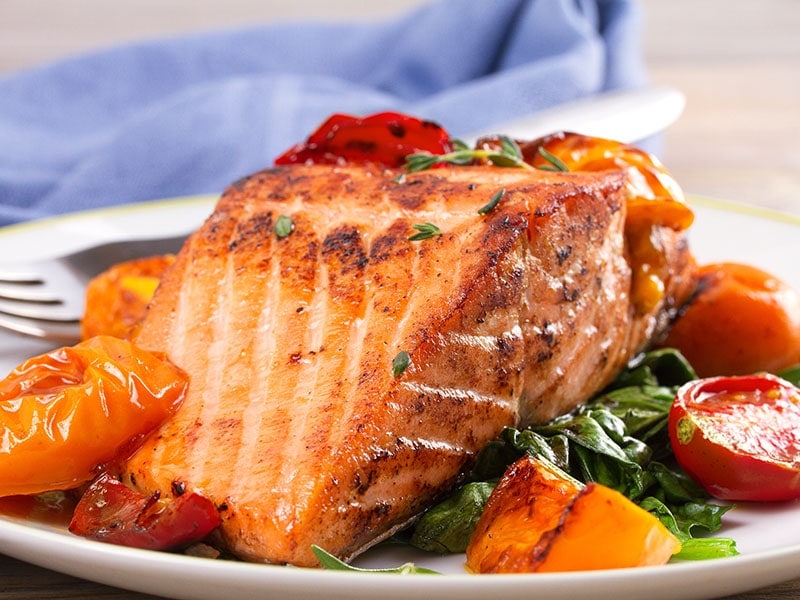
A quick way to make your salmon restaurant-worthy is by broiling it. Using the hottest part of the oven, broiling can instantly brown your salmon and give it that mouth-watering charred look. This method helps to really intensify all the flavors of the salmon and seasonings.
To optimize this method, you should place the salmon in a premium broiler pan, which will deliver even heat distribution. It also offers excellent heat retention capacity to keep your salmon warm for longer.
En Papillote
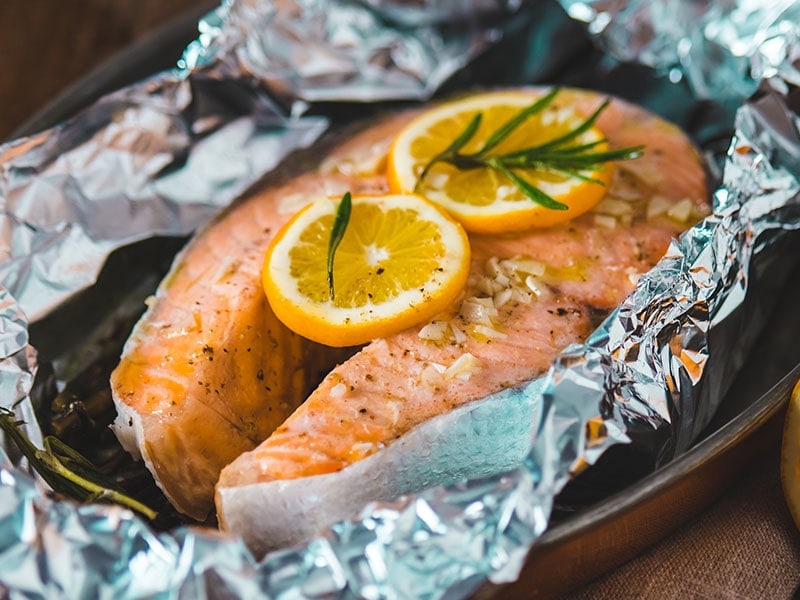
This method basically means to bake your salmon while it’s wrapped in foil. It uses steam to cook, so your salmon can remain perfectly moist and tender. The result is a beautiful and fragrant dish that looks like you put a lot of effort in, even though the process is quite simple.
Pan-Searing
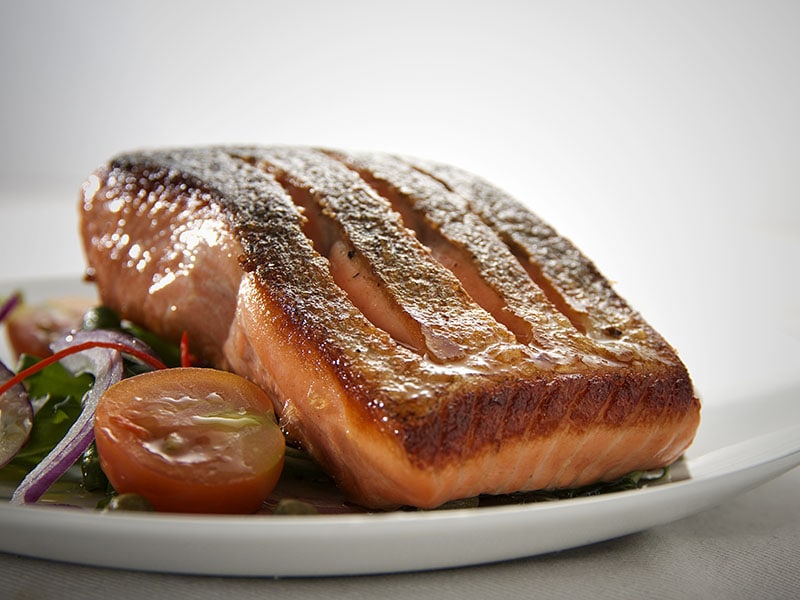
Frying your salmon over high flames is a good and quick way to give it the most incredible taste. This method is mostly loved for the complex texture it brings to your salmon. The skin is crispy and crunchy, while the flesh is still soft, tender, and full of flavor.
A comparison of four popular salmon cooking methods and how they taste. Watch this video to know more:
How To Tell If Salmon Is Cooked?
Being able to tell when your salmon is ready can help you achieve that restaurant-worthy dish you have always dreamed of. Even though each piece of salmon is different, depending on the thickness, there are still some general methods you can use.
Method 1: Examine The Color & Texture
This method can be learned over time. The more you cook salmon the better you are at telling its doneness just by using your eyes.
Step 1: Use A Butter Knife To Check
Press the tip of a butter knife to the thickest part of the salmon. Push it halfway down so you can get a good look at the flesh on the inside.
Step 2: Look At The Salmon’s Color
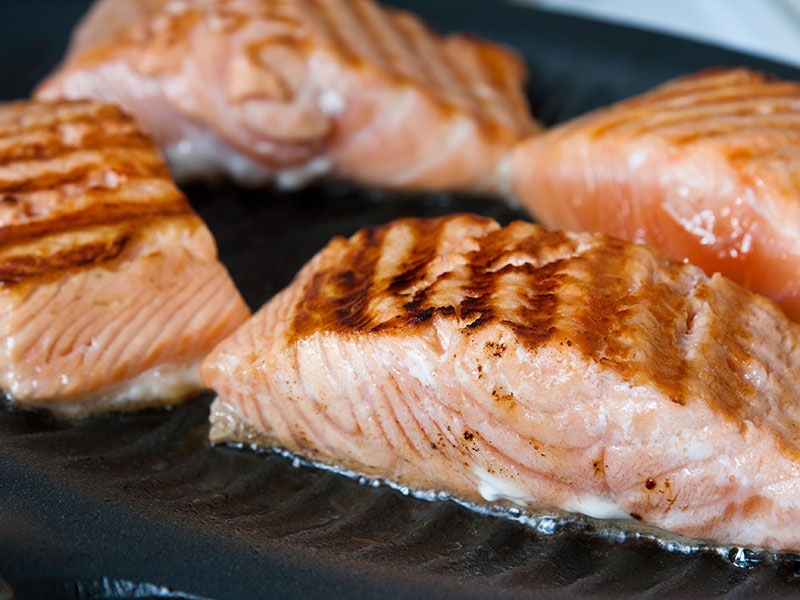
On the outside, cooked salmon will mostly turn into a light pink. It could also be white or brown, depending on the method. On the inside, it will be translucent light pink. If the center is opaque, it is overcooked, and if it is thoroughly translucent, it is undercooked.
Step 3: Check For The Texture
Cooked salmon should be slightly firm and consistent. The pieces should pull apart easily when you press the knife into it. If it flakes, that means it is overcooked.
Step 4: Let The Salmon Sit For A Few Extra Minutes
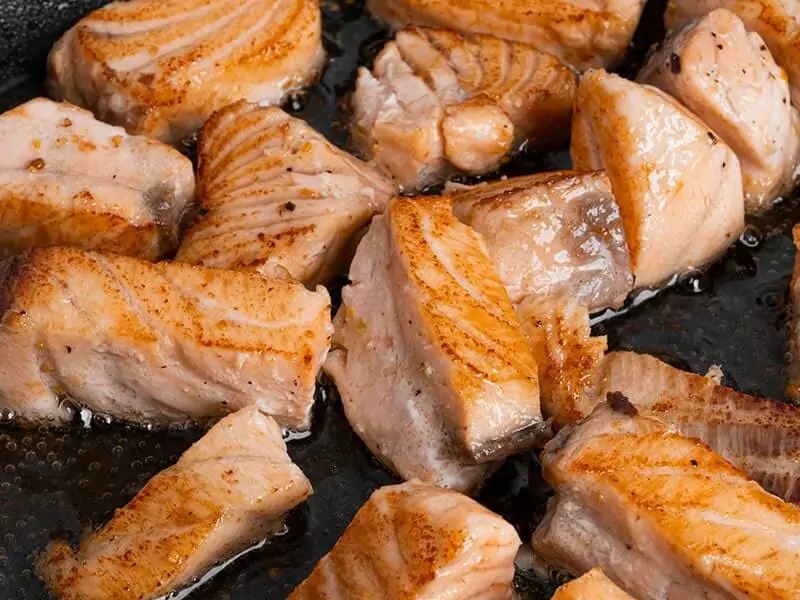
Salmon continues to cook for a bit longer after it’s been removed from the heat. So you can take it out once it is firm and the center is translucent pink, let it sit for about 5 minutes before serving.
Method 2: Checking The Temperature
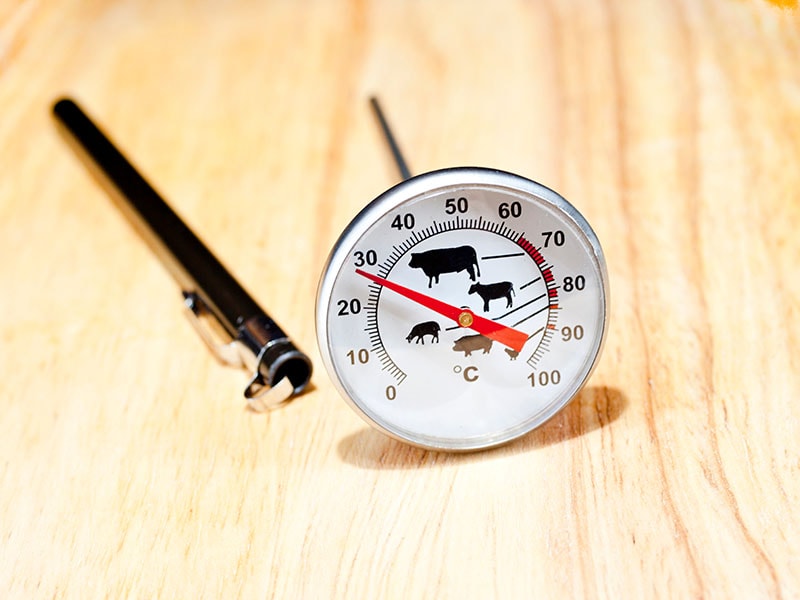
This is the most accurate method to tell if your salmon is ready. Just a quick look will tell you exactly what cooking stage the salmon is at without having to guess too much. I usually use a well-made wireless thermometer for meat to gauge as it can provide a highly accurate reading.
Step 1: Insert A Meat Thermometer Into The Salmon
The thermometer is the most accurate tool to tell if your salmon is cooked. For the best result, stick it into the thickest part of the salmon and wait for it to show the temperature.
Step 2: Look At The Temperature
The temperature range for cooked salmon is between 110F and 140F. If you want your fish rare, then it should be from 110F to 125F, medium rare is 125F to 130F, and the rest is medium to well-done.
Step 3: Turn Off The Heat And Let The Salmon Rest
Remove your salmon from the heat after it is finished. It can still cook for a little bit afterward, so you should let it sit for an extra 5 – 10 minutes.
Method 3: Using A Cake Tester Or A Butter Knife
You can also use a cake tester or a butter knife to quickly check the doneness of the salmon. Stick it to the thickest part of your salmon for three seconds, then put it beneath your bottom lip. If it is warm, then the fish is done. If it is cool or lukewarm, it needs to be cooked longer.
Some simple tricks to tell when your salmon is done. You should see the video below:
Cooking Time For Different Cooking Methods
The cooking time for salmon depends mainly on the salmon’s cooking temperatures, methods, and thickness. The thicker the slice, the longer the time. So to know the total time length to cook salmon at 400F, you’ll have to look at its thickness. Check this table for a relative cooking time estimation.
Common Mistakes You Could Make When Cooking Salmon
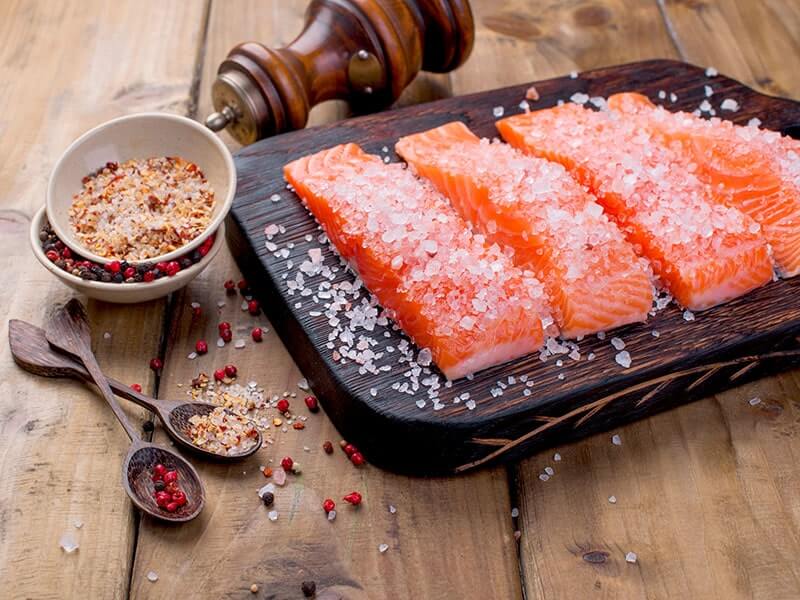
Many consider cooking salmon to be an art because of how complex it is. There are different rules to follow for different types of fish and methods. However, here are some general mistakes that anyone could make when cooking.
Leaving The Bones In
Most prepackaged fillets are already deboned, but if you’re buying fresh fish, they might not be. You can ask the seller to remove the bones for you or use tweezers to take out the pin bones. This will save you from a possible choking hazard later on when you’re eating salmon.
Removing The Skin
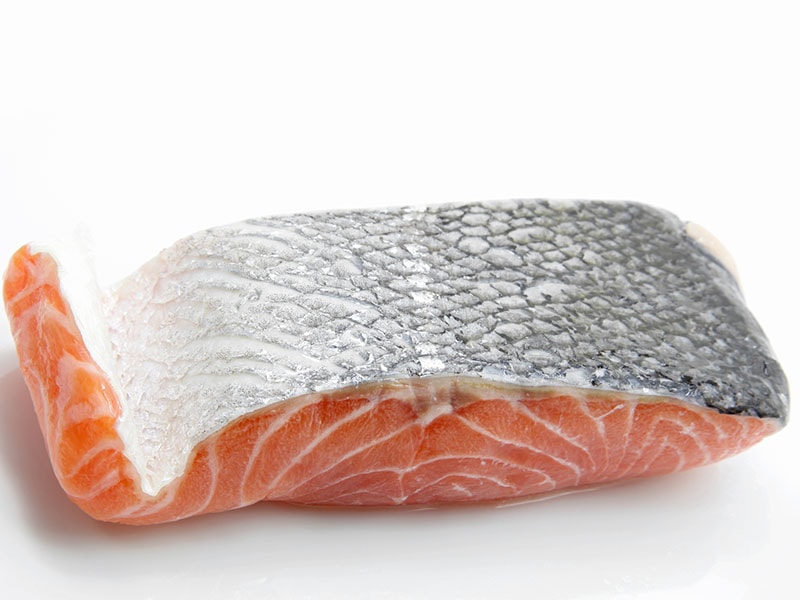
Unless you’re poaching or slow-roasting the salmon, you should leave the skin on. It helps the flesh from being cooked too quickly, drying out, and falling apart on the pan. Many also find that keeping the skin adds exciting flavors to the salmon, so keep it on next time you cook.
Seasoning The Fish Too Soon
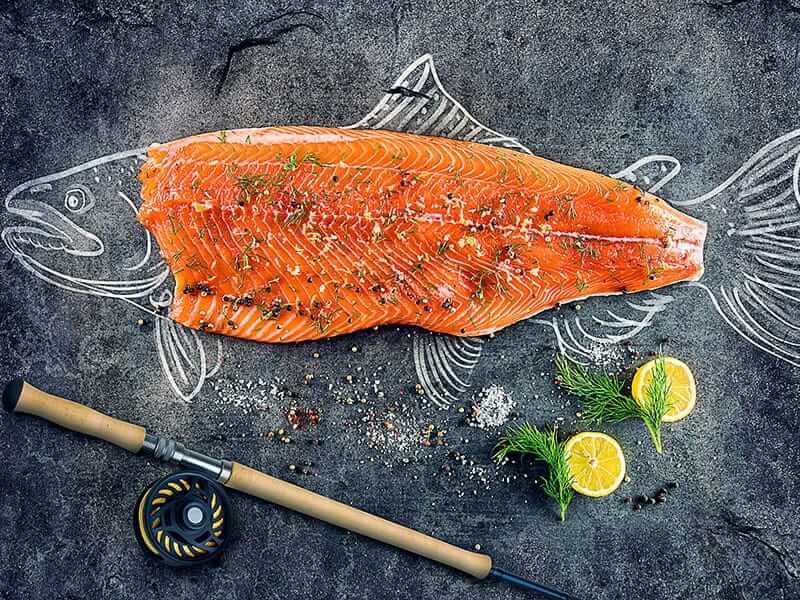
Most people like to add salt to the salmon for more flavor. You should only do this after the pan is already heated to avoid drying out the fish before you even cook it. If you add the salt too soon, the flesh might separate from not having enough moisture.
Cooking With The Skin-Side Up
Since the skin acts as an extra layer to protect the flesh from the heat, you should start with the skin-side down. It helps to prevent over-browning and makes it easier to flip the fish to the other side. If you’re frying or grilling salmon, cook the skin-side for 5-7 minutes before flipping it over.
Being Too Harsh When Checking For Doneness
Salmon is a delicate fish, so you should be careful when checking it. Many tend to pry a fork or knife too harshly when looking inside the salmon, which could affect the texture of the fish if you do this multiple times.
So, when removing the salmon from the heat, you should use a high-quality kitchen tong to avoid smushing the fish. Gently use a fork/knife to check the salmon’s doneness according to my prior instructions.
Overcooking The Salmon
The fish will continue to cook for several minutes after being removed from the source. If you leave it on for too long, it will be dry, flaky, and stiff. It will also have an orange color and have white gooey liquid leaking out. Look for these signs to make sure you don’t overcook.
You should see the video below:
FAQs
Salmon is a fish with great complexity, and with it comes many questions. Read some common ones here to learn more about this fascinating fish and see if they can resolve your concerns.
Tips And Tricks To Make Your Salmon Dish Better
If you are new to cooking salmon, use mayo as a safety net for when you are making this fish. It helps to add some flavor while keeping the fish from drying out. Mayo is also sticky in texture, so you can cook salmon with some crunchy toppings for some extra crisp if you’d like.
Invest in a good nonstick pan if you can, so cooking salmon can be a bit easier. Fish skin can melt onto the pan and stick there, so using the right kind of pan helps to keep the whole slice intact after you are done.
Make it easier to time your salmon slices by choosing ones that are approximately the same size. They will be done at the same time, and you won’t have to worry too much.
Well-cooked salmon may sound like a lot of work, but it’s pretty easy once you are used to it. Take an extra few steps so you can make the most tender and flavorful fish for yourself and your loved ones. Share this article with those who need it, and I will see you next time.
References
- En.wikipedia.org. 2021. Salmon as food – Wikipedia. [online] Available at: <https://en.wikipedia.org/wiki/Salmon_as_food>.
- Danahy, A., 2019. Can You Eat Raw Salmon, and Should You?. [online] Healthline. Available at: <https://www.healthline.com/nutrition/can-you-eat-raw-salmon#health-risks>.
